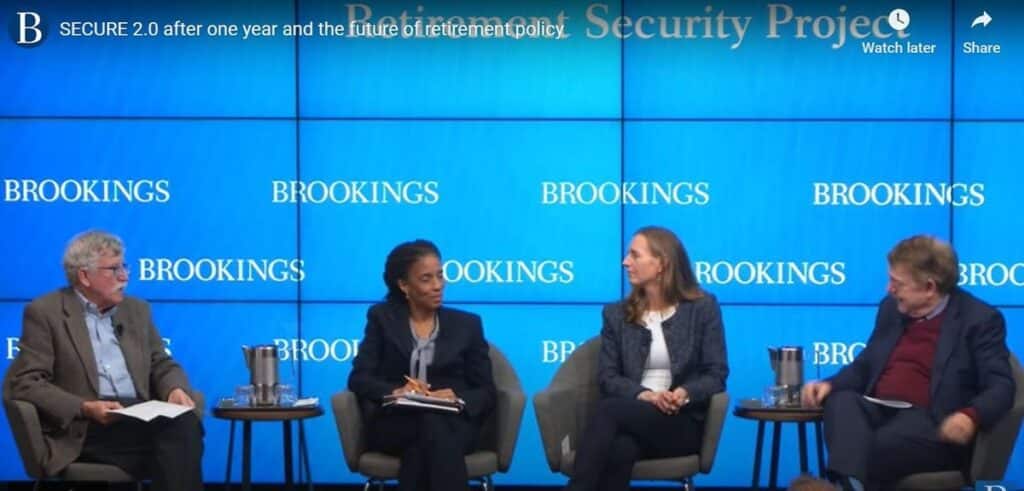The Retirement Security Project at The Brookings Institution convened an event last week that traced the evolution of retirement policy in recent decades and discussed the many ways to make the retirement system work better for all Americans.
Go deeper: Landmark legislation passed in 2021 known as SECURE 2.0, while helpful in many ways, doesn’t go far enough to assist low- and moderate-income households, experts say.
- With SECURE 2.0 in place, the percentage of Americans who will run out of money during retirement was minimally reduced from 40 percent to 38.5 percent. That’s according to preliminary research from the Employee Benefit Research Institute shared by Joshua Gotbaum, chairman of Maryland’s Small Business Retirement Savings Board.
- A key component of SECURE 2.0 is auto-enrollment in a retirement savings program for companies that offer one. Fiona Greig, global head of investor research and policy at Vanguard Investment Strategy Group, noted that when people switch jobs, their savings rate reverts to the minimum three percent and the money they saved up to that point will be placed into a lower-yielding money market account.
- People who don’t immediately understand these changes occur risk losing out on the amount they save for retirement.

